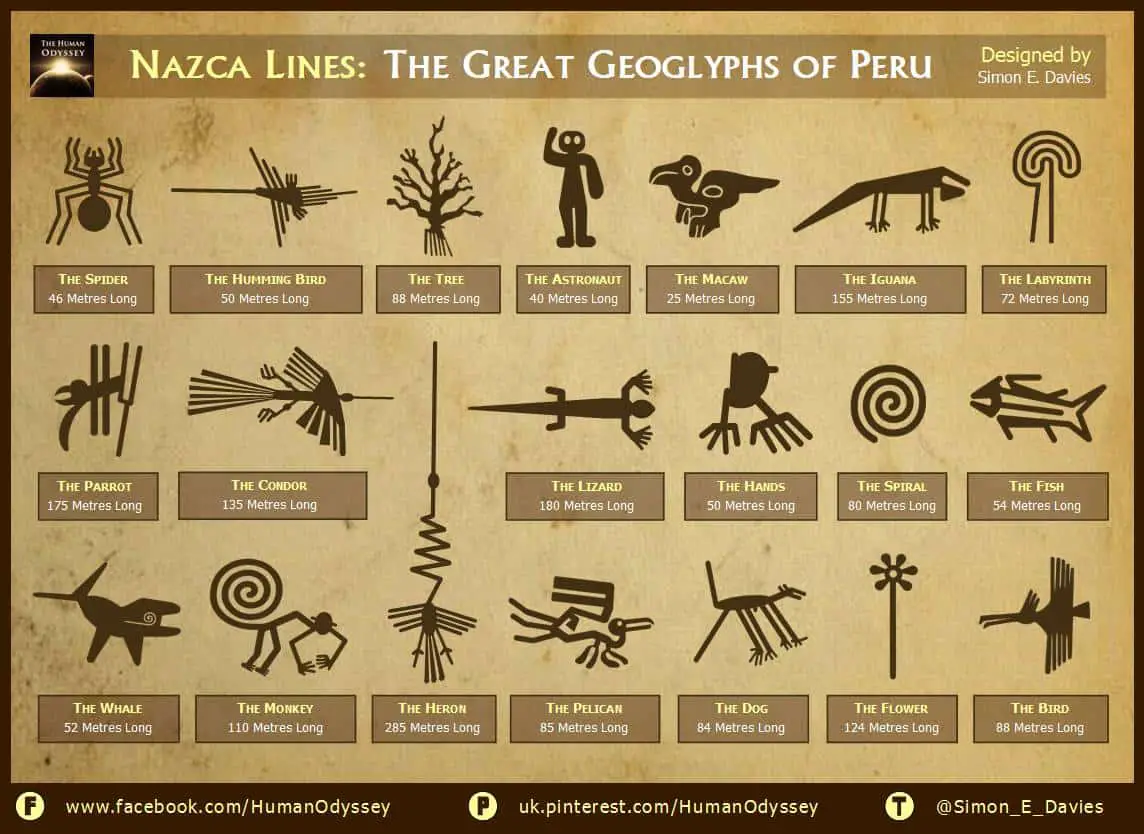nivek
As Above So Below
As if the Nazca lines weren’t already mysterious enough—there are more than 800 straight lines, 300 geometric figures and 70 animal and plant designs at Nazca—if you plot the Nazca lines over the entire planet they converge at one SPECIFIC spot.

This is what happens when you plot the Nazca lines over the entire planet

The Nazca lines, located in Nazca Peru have captured the imagination of historians, researchers, and tourists for decades.
The lines—only seen from the air—were spotted in 1927, when Airlines started flying over Peru and passengers reported seeing strange lines, figures, and shapes on the ground.
So far, researchers have cataloged 800 straight lines, 300 geometric figures and 70 animal and plant designs, also called biomorphs. No one can say for certain what their meaning is, why they were created, who exactly created them, and why they are only visible from the air.
Nazca legends suggest that Viracocha, the Inca creator god commissioned the Nazca lines thousands of years ago.
The truth is that we don’t know why they were created. There are many theories explaining the Nazca lines.
Archaeologist Johan Reinhard theorized in 1985 how the Nazca lines were massive figures used in religious practices where the ancients worshiped deities associated with water and crops.
Some tests performed by scientists from the University of Dresden have shown that electric conductivity was 8000 higher on the Nazca lines than next to them.
With a depth between 10 and 30 centimeters, the most famous Nazca lines are the Hummingbird, the Condor, the Astronaut, and the Spider.
And while numerous questions and enigmas surround the Nazca lines, there are some who have wondered what would happen if we plotted the entire Nazca lines over the globe.
One YouTube user did just that and the results according to many are staggering.
Why? because if you plot the lines—using Google Earth—over the entire globe they converge at one specific point: Angkor Wat, a temple complex located in Cambodia and one of the largest religious monuments on the planet measuring a staggering 162.6 hectares.
Now while some may find this extremely interesting, that Nazca lines up on the other side of Earth with Angkor Wat, the truth is that the Cambodian temple is the exact antipodal of Nazca.
An antipodal point on the surface of a sphere is the point which is diametrically opposite to it—so situated that a line drawn from the one to the other passes through the center of the sphere and forms a true diameter. As it turns out, antipodes of any place on the Earth is the point on the Earth’s surface which is diametrically opposite to it. Check out antipodesmap.com for interesting facts.
While it certainly is interesting that Nazca and Angkor Wat are “connected” at least via an antipodal point, I’d say it’s just a coincidence, since all directions leading out of a single point, always converge at the antipodal point on the opposite side of a sphere.
However, I can’t help and ask whether it is a coincidence that an ancient sites antipodal point is another ancient site?
This is what happens when you plot the Nazca lines over the entire planet

